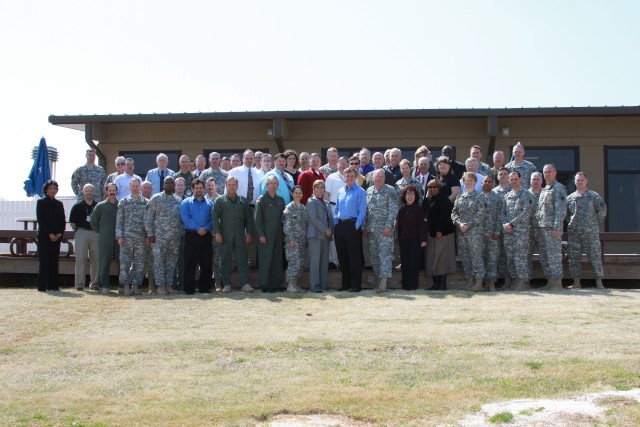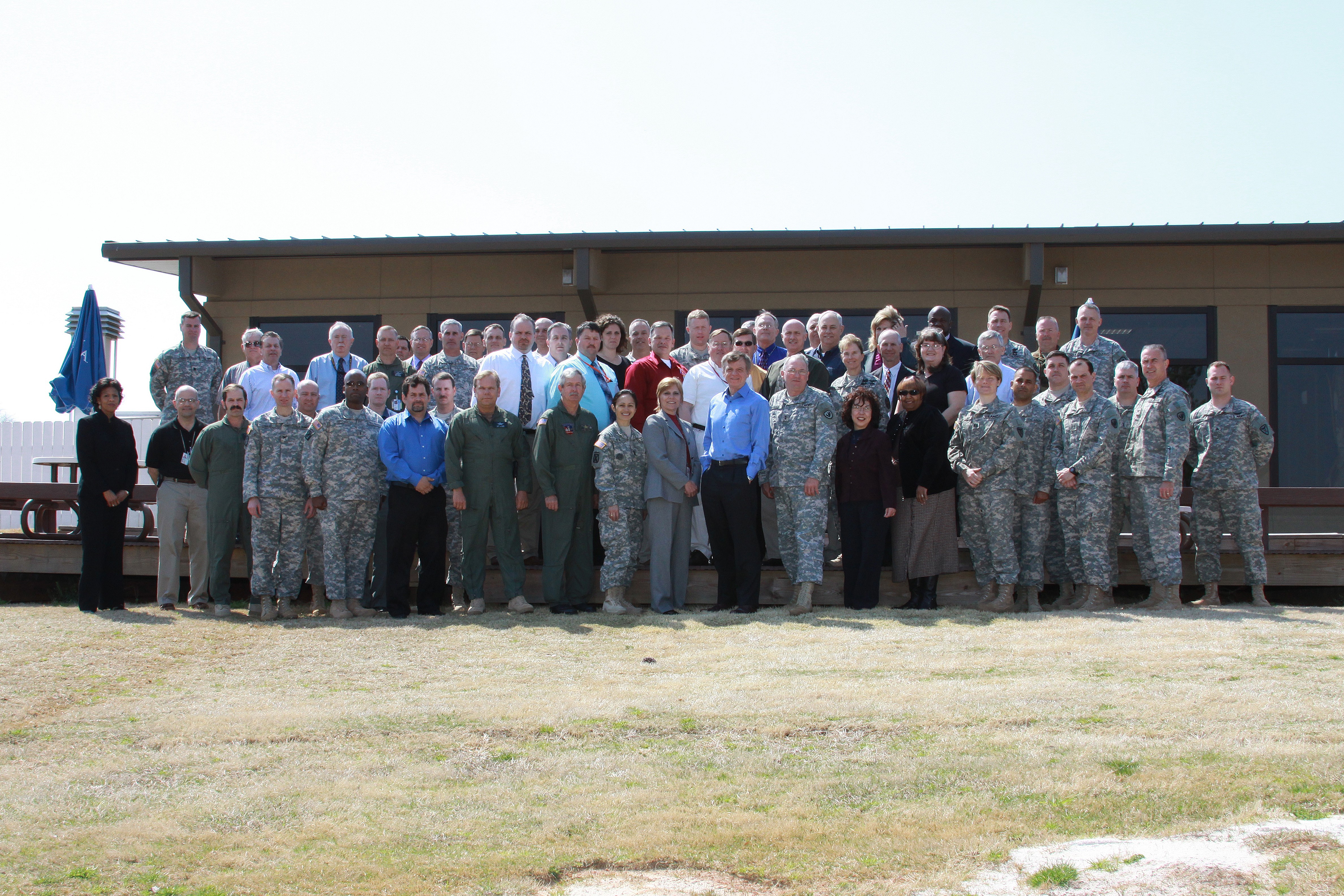
The U.S. Army Aviation Center of Excellence and Fort Rucker Leading Change Team assumed the role as the lead organization for achieving culture change across the Branch and installation during the team's inaugural meeting March 23 at the Silver Wings Golf Club conference room.
The 42 LCT members were selected based on their insights, experience, leadership and commitment to serve on the team that will bring about real, substantial and bold change to the Aviation Center and Fort Rucker.
"My hat goes off to you. I congratulate you on taking the challenge," said Maj. Gen. James O. Barclay III, USAACE and Fort Rucker commanding general. "You are going to be the ones who carry this into the future, across USAACE, the installation and the Branch."
The selection of the LCT is part of the greater culture change effort that involves the transformation of Army Aviation and supporting activities into an organization that is focused on training and generating relevant Aviation forces to meet the constantly changing needs of the Army.
In June 2009, USAACE began discussions with Dr. John Kotter, chief research officer at Kotter International. Kotter, Massachusetts Institute of Technology and Harvard University graduate and author of the international bestseller, "Leading Change," is recognized as one of the nation's foremost experts on the topics of leadership and strategic change.
The LCT's inaugural meeting was the result of a detailed plan that generated more than 4,000 names of individuals who identified themselves as members of the USAACE/Fort Rucker workforce who recognized the need to replace inefficient processes with greater efficiency, effectiveness, flexibility, innovation and creativity.
The commanding general's intent was to develop a diverse team of military, civilians and contractors who represented a vertical slice of USAACE and Fort Rucker and further develop processes to eliminate 50 years of historical inefficient processes and disruptive organizational inertia. Kotter and his team mentored a small group of USAACE senior leaders over the past months, which helped the command identify more than 80 LCT applicants.
While Barclay recognized that small, incremental change is both common and frequent across USAACE and within the military culture, large-scale and broad change is needed to transform the Branch and installation in order to meet the demands placed on Army Aviation.
"We must have patience to see the movement through," said Blaine Pendleton, a contractor instructor-pilot and LCT member. "You have to be part of the thrust to make things happen and not part of the drag that brings things down."
Asked if she thought USAACE was prepared for the change ahead, Leslie Gordnier, USAACE operations resident training management division specialist, replied, "If we're not, we better be soon."
Gordnier applauded the approach to seek change from within rather than have it forced on organizations.
"The beauty of the LCT is the members have volunteered because they foresee the need for change across their diverse organizations. This isn't being forced on us, and that will make us more successful," she said.
"When you gather a group of volunteers who aren't afraid to question the status quo, ask them to brainstorm for ways to make improvements and give them the tools necessary to make improvements, you had better be prepared for major change."
Within the next few weeks, the LCT will meet to begin forming the organization's change vision and chart the way ahead.
The small team from Kotter International will continue to provide mentorship over the months ahead while the LCT works to identify outdated, antiquated and inefficient processes, and take creative and innovative action to implement solutions.
"Our relevancy is at stake, both as a training institution and as a garrison that supports the institution," said Justin Mitchell, deputy garrison commander. "To keep pace with our contemporaries in a continuously hectic and unpredictable environment, we must seize this opportunity now or risk mission failure on many levels."
Barclay acknowledged the challenge may appear daunting - transform the Aviation Branch to be flexible and adaptive so it can meet the demands of the current operating environment.
"This is not a matter of if," he said. "It is a matter of how, but most importantly, why. The environment in which our Aviation force will operate in the future will be one of uncertainly and complexity. Our Soldiers at every level, along with our training institution, must become agile, innovative, flexible and adaptive. That requires change - change in our practices and processes as well as change in how we view ourselves and our ideas."

Social Sharing